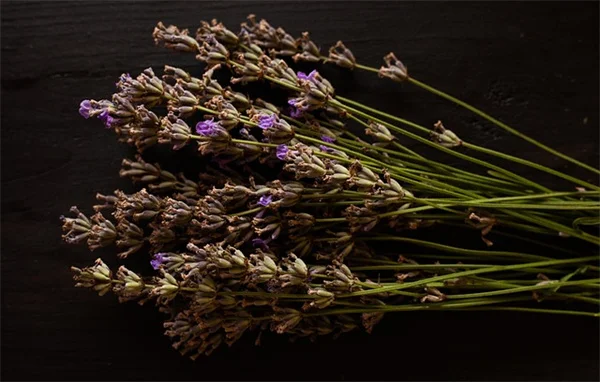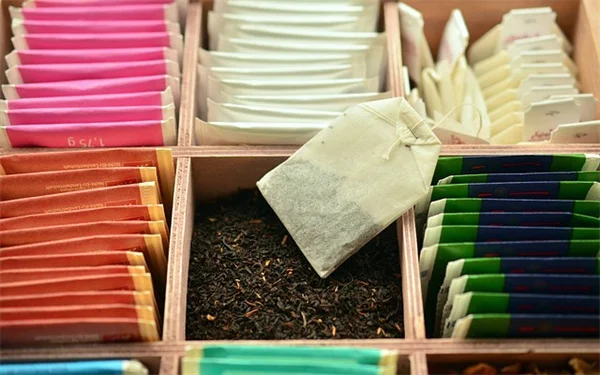Advertisement
Are salt substitutes good for you? The answer is yes - when used correctly! Research shows that switching to salt substitutes can lower your risk of heart disease by 13% and reduce chances of early death by 11%. I've seen firsthand how this simple kitchen swap can make a big difference in blood pressure numbers.Here's the deal: The American Heart Association recommends no more than 2,300mg of sodium daily (about 1 teaspoon), but most of us blow past that limit before lunch. That's where salt substitutes come in - they replace some sodium chloride with potassium chloride, which actually helps lower blood pressure rather than raise it.But wait - before you toss out all your salt, there are a few things you should know. While these substitutes work great for most people, those with kidney issues or on certain medications need to be careful with the extra potassium. The good news? We'll walk you through exactly how to make the switch safely and effectively.
E.g. :HER2-Low Breast Cancer: New FDA-Approved Treatment Explained
- 1、Why Salt Substitutes Could Be Your Heart's New Best Friend
- 2、Potassium: The Secret Weapon in Salt Substitutes
- 3、Your Practical Guide to Cutting Salt
- 4、The Great Salt Debate: Does Type Matter?
- 5、Making the Switch: Your Action Plan
- 6、The Bottom Line on Salt and Health
- 7、The Hidden Sodium in Everyday Foods
- 8、Flavor Hacks That Beat Salt Every Time
- 9、How Your Taste Buds Adapt (It's Fascinating!)
- 10、Salt Substitutes Around the World
- 11、FAQs
Why Salt Substitutes Could Be Your Heart's New Best Friend
The Shocking Truth About Your Salt Shaker
Did you know that tiny white crystals in your salt shaker might be slowly damaging your heart? The American Heart Association recommends limiting sodium to just 2,300 mg daily - that's about one teaspoon! But here's the kicker: most Americans consume nearly 50% more than this.
Let me paint you a picture: imagine your blood vessels as garden hoses. When you eat too much salt, it's like turning up the water pressure way too high. Over time, this constant pressure can lead to leaks (strokes) or bursts (heart attacks). Now, what if I told you there's a simple swap that could turn down that pressure?
The Science Behind Salt Substitutes
Researchers analyzed 21 international studies involving nearly 30,000 people across four continents. The results were eye-opening:
| Health Benefit | Reduction Risk |
|---|---|
| Early death from any cause | 11% lower |
| Cardiovascular disease | 13% lower |
| Heart attacks | 11% lower |
The best part? These benefits appeared regardless of age, gender, or location. As Dr. Cutler from Providence Saint John's Health Center puts it: "Lower salt was good for everyone - it's like a universal remote for better health."
Potassium: The Secret Weapon in Salt Substitutes
 Photos provided by pixabay
Photos provided by pixabay
Why Potassium Makes All the Difference
Here's where things get interesting. Salt substitutes replace some sodium chloride with potassium chloride. But wait - isn't potassium dangerous? Actually, no! The studies showed no adverse effects from the potassium in these substitutes.
Think of potassium as your body's natural pressure regulator. While sodium makes your body retain water (increasing blood pressure), potassium helps flush out excess sodium. It's like having a built-in plumber for your circulatory system!
Who Should Be Cautious?
Now, I'm not saying potassium is perfect for everyone. If you have kidney issues or take certain medications, you'll want to chat with your doctor first. As consultant dietitian Trista Best explains: "For most people, extra potassium is helpful, but we need to be smart about it."
Here's a pro tip: instead of supplements, get potassium from foods like bananas, spinach, and yogurt. Your taste buds and your heart will thank you!
Your Practical Guide to Cutting Salt
Breaking Up With Your Salt Habit
Let's be real - going cold turkey on salt is tough. I tried it once and my eggs tasted like cardboard! But here's the good news: you don't have to suffer.
Start by mixing regular salt with substitutes gradually. Week 1: try 25% substitute. Week 2: bump it to 50%. Before you know it, you'll prefer the new flavor! And guess what? Your blood pressure won't know what hit it.
 Photos provided by pixabay
Photos provided by pixabay
Why Potassium Makes All the Difference
Who says you need salt to make food tasty? Here's my favorite trick: make "salt-free confetti" by mixing:
- Dried garlic
- Onion powder
- Paprika
- A pinch of cayenne
Sprinkle this on everything from popcorn to chicken. Your taste buds will dance while your heart does the happy dance!
The Great Salt Debate: Does Type Matter?
Himalayan Pink vs. Sea Salt: The Showdown
You've seen those fancy salts at Whole Foods, right? The pink ones, the black ones, the ones that cost more than your last Uber ride. Here's the truth: they're all basically the same when it comes to sodium content.
Registered dietitian Matthew Black puts it bluntly: "Whether it's pink, black, or from the Dead Sea, sodium is sodium. Your blood pressure can't tell the difference." Save your money for something that actually matters - like good olive oil!
Reading Between the Labels
Here's a question that might surprise you: Do you know how much sodium is in your favorite foods? Let me show you some shocking examples:
A single slice of pizza can have 700mg (that's half your daily limit in one bite!). Canned soup? Often 800mg per serving. Even "healthy" foods like cottage cheese can be sodium bombs.
The solution? Become a label detective. Look for "low sodium" options or make your own versions. Your future self will high-five you for it!
Making the Switch: Your Action Plan
 Photos provided by pixabay
Photos provided by pixabay
Why Potassium Makes All the Difference
You don't need to overhaul your diet overnight. Start with these simple swaps:
- Choose fresh or frozen veggies over canned
- Snack on unsalted nuts instead of chips
- Rinse canned beans before using
Each small change adds up. Before you know it, you'll have reduced your sodium by thousands of milligrams without feeling deprived.
When Dining Out: Survival Guide
Restaurants are sodium minefields, but you can navigate them safely. Here's my go-to strategy:
Ask for sauces on the side, avoid anything described as "crispy" (that's code for salty), and don't be shy about requesting less salt. Remember - you're the customer! As my grandma used to say: "The squeaky wheel gets the unsalted fries."
The Bottom Line on Salt and Health
Why This Matters More Than You Think
Here's a sobering fact: reducing your sodium by just 1,000mg daily can significantly improve your health. That's less than what's in a single fast food burger!
The choice is yours: stick with old habits and risk your health, or make simple swaps that could add years to your life. I know which option I'm choosing - how about you?
Your Heart Will Thank You
Making these changes isn't just about avoiding bad outcomes. It's about feeling more energetic, sleeping better, and enjoying life more fully. As cardiologist Dr. Tadwalkar reminds us: "Every positive change creates a ripple effect throughout your entire body."
So go ahead - pass the salt substitute. Your future self will be glad you did!
The Hidden Sodium in Everyday Foods
Breakfast Traps You Didn't See Coming
You might think you're starting your day right with that bowl of cereal, but here's the shocker - many breakfast cereals contain up to 300mg of sodium per serving! That's before you even add milk. And don't get me started on breakfast sandwiches - your favorite bacon, egg and cheese could be packing nearly half your daily sodium allowance before 9 AM.
Let me share a personal story. Last month, I tracked my sodium intake for a week and nearly fell off my chair when I saw the numbers. My "healthy" morning routine - whole wheat toast with peanut butter and a glass of orange juice - was secretly loading me up with sodium from the bread and processed peanut butter. The solution? I switched to homemade oatmeal with fresh fruit and unsalted nuts. My taste buds adjusted in about three days, and now I actually prefer it!
The Sneaky Sodium in "Healthy" Snacks
Here's something that'll make you look at your snack drawer differently: many protein bars and "health" snacks contain more sodium than a small bag of potato chips. Crazy, right? I recently compared two popular brands at my local grocery store:
| Snack Item | Sodium Content |
|---|---|
| Protein Bar A | 280mg |
| Protein Bar B | 320mg |
| Small Bag of Chips | 210mg |
See what I mean? The marketing might say "healthy" but the nutrition label tells a different story. My advice? Stick to whole foods like fresh fruits, raw veggies with hummus, or a handful of unsalted almonds when snack attacks hit.
Flavor Hacks That Beat Salt Every Time
Herbs and Spices: Nature's Flavor Boosters
Who needs salt when you've got an entire spice rack waiting to jazz up your meals? I've discovered that fresh herbs can completely transform a dish without adding a single milligram of sodium. Try this: next time you're making chicken, rub it with garlic, rosemary, and a squeeze of lemon instead of salting it. You'll be amazed at how much flavor you get!
Here's a fun experiment I did with my family last week: I made two batches of roasted potatoes - one with just salt, and one with a mix of garlic powder, paprika, and thyme. Guess which one everyone preferred? The spiced version won by a landslide! Even my salt-loving teenager admitted it tasted better. That's when I knew we were onto something good.
The Magic of Acidic Ingredients
Ever wonder why restaurant food tastes so good? Here's their secret: they use acid to brighten flavors instead of relying solely on salt. A splash of vinegar or squeeze of citrus can make flavors pop in ways salt never could. I keep a bottle of balsamic glaze in my fridge - just a drizzle can turn boring steamed veggies into something special.
Let me give you my favorite example. Instead of salting your avocado toast, try this: mash the avocado with lime juice, red pepper flakes, and a tiny bit of olive oil. The lime brings out the avocado's natural creaminess while the pepper adds excitement. You won't even miss the salt, I promise!
How Your Taste Buds Adapt (It's Fascinating!)
The 14-Day Reset Challenge
Did you know your taste buds completely regenerate every two weeks? This means you can actually "retrain" them to prefer less salty foods in just 14 days! I tried this myself last year, and the results were incredible. The first three days were tough - everything tasted bland. But by day seven, I started noticing subtle flavors I'd never appreciated before. By day fourteen, restaurant food actually tasted too salty to me!
Here's how it works: when you consistently reduce sodium, your taste buds become more sensitive to it. That means you'll get the same flavor impact from less salt. It's like turning down the volume on your stereo - at first it seems too quiet, but soon you realize you can hear all the instruments more clearly. Why not give it a try? Your future self will thank you.
The Surprising Science of Umami
Here's a flavor fact that might surprise you: umami (that savory fifth taste) can satisfy your cravings just as well as salt! Foods like mushrooms, tomatoes, and aged cheeses are packed with natural umami compounds. I've found that adding sautéed mushrooms to dishes reduces how much salt I need by at least half.
Want to see this in action? Try this simple test: make two bowls of plain rice. Add salt to one, and a sprinkle of nutritional yeast to the other. You'll be shocked at how satisfying the yeast version tastes, with way less sodium. It's like discovering a whole new world of flavor!
Salt Substitutes Around the World
Global Inspiration for Your Kitchen
Ever notice how Italian food tastes amazing without being overly salty? That's because Italian cooking relies on fresh herbs, garlic, and olive oil for flavor. I learned this firsthand during my trip to Tuscany last summer - the local chefs showed me how they use lemon zest and fresh basil to create vibrant flavors without excess salt.
Here's a cool trick I brought home: instead of salting pasta water heavily, try adding a bay leaf, garlic clove, and splash of olive oil. The pasta absorbs these subtle flavors beautifully. My kids now prefer it this way, and I love that they're developing healthier taste preferences without even realizing it!
Asian Flavor Secrets
Asian cuisines offer brilliant salt-reducing techniques we can all learn from. Take miso paste - it's packed with umami flavor but contains about 60% less sodium than table salt. I've started keeping white miso in my fridge for salad dressings and marinades. A teaspoon adds incredible depth without the sodium overload.
Another game-changer? Fish sauce. Now hear me out - it sounds intense, but used sparingly, it delivers big flavor with minimal sodium. I add just a few drops to stir-fries instead of soy sauce. The result? More complex flavor with about 75% less sodium. Your taste adventure starts now!
E.g. :Mayo Clinic Minute: Are you using a salt substitute? - Mayo Clinic ...
FAQs
Q: How do salt substitutes actually help your heart?
A: Salt substitutes help your heart in two major ways. First, they reduce your sodium intake - and we all know too much sodium raises blood pressure. But here's the cool part: they also contain potassium, which acts like nature's pressure valve for your bloodstream. Studies show this one-two punch can lower cardiovascular risks by 13%. I recommend starting with a 50-50 mix of regular salt and substitute to let your taste buds adjust. Remember, it's not about eliminating salt completely, but finding that sweet spot where your food still tastes great without putting your heart at risk.
Q: Are all salt substitutes created equal?
A: Not exactly! While most salt substitutes replace sodium with potassium, the amounts can vary. Some brands mix in herbs or other flavor enhancers too. Here's what I tell my clients: check the label for potassium chloride content and compare sodium levels. The best ones will have at least 25% less sodium than regular salt. Pro tip: Look for products that list actual milligrams of sodium per serving - this makes tracking your intake way easier. And don't fall for fancy marketing - that expensive pink Himalayan salt substitute isn't necessarily better than the store brand!
Q: Who should avoid using salt substitutes?
A: If you have kidney problems or take certain blood pressure medications (like ACE inhibitors), you'll want to talk to your doctor before using salt substitutes. The extra potassium can build up in your system if your kidneys aren't filtering properly. I've worked with many patients who think "natural" means "safe for everyone," but that's not always true with potassium. Also, if you're on a potassium-sparing diuretic, these substitutes could push your levels too high. When in doubt, get your levels checked - it's a simple blood test that could save you serious trouble.
Q: Can I get the same benefits just by eating potassium-rich foods?
A: Great question! While foods like bananas, spinach and yogurt are fantastic potassium sources, research shows salt substitutes give you an extra edge. Here's why: they directly replace sodium in your diet while adding potassium - it's a double win. I always tell people to do both - use substitutes AND eat potassium-rich foods. Think of it like wearing a belt and suspenders for your heart health! Just keep track of your total potassium intake if you're loading up on both. My personal favorite combo? A salt substitute on my eggs with a side of avocado - delicious and heart-smart!
Q: How long does it take to see health benefits from switching to salt substitutes?
A: The blood pressure benefits can start showing up in as little as 2-4 weeks! I've seen patients drop 5-10 points just from this simple change. But here's the real kicker - the long-term heart protection keeps building over time. The studies showing those 11-13% risk reductions looked at people using substitutes for 6 months or more. My advice? Stick with it even if you don't notice immediate changes. Your taste buds will adjust (trust me, mine did!), and your heart will thank you later. Pro tip: Take before-and-after blood pressure readings to track your progress - it's super motivating!

